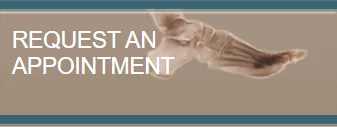Drug Free... Surgery Free... Pain Free!!

Laser Therapy, or "photobomodulation," is the use of specific wavelengths of light to create therapeutic effects. These effects include improved healing time, pain reduction, increased circulation, and decreased swelling.
During Laser Therapy the infrared laser light interacts with tissues at the cellular level and metabolic activity increases within the cell, improving transport of nutrients across the cell membrane. This initiates the production of cellular energy that leads to a cascade of beneficial effects, increasing cellular function and health.
Each Laser Therapy treatment is PAINLESS and increases circulation, drawing water, oxygen, and nutrients to the damged area creating the optimal healing environment.
Laser Therapy Can Help With
- Ligament Sprains
- Morton's Neuroma
- Repetative Stress Injuries
- Plantar Fasciitis
- Osteoarthritis
- Diabetic Neuropathy
- Diabetic Foot Ulcers
- Burns
- Sports Injuries
- Achilles tendonitis
FAQ:
How long has laser therapy been utilized in pain management? The laser was invented in 1960 and the biostimulative properties of laser light were first discovered in 1967. Therapy lasers have been used in Europe much longer than in the United States. The United States Food and Drug Administration (US FDA) first cleared therapy lasers in 2002, and Class IV lasers in 2003.
What is the power of most laser therapy devices on the market? Laser therapy devices being used in the US today range in power output from 5 milliwatts to 12,000 milliwatts. Class 3a lasers are 5 milliwatts, Class 3b range from 5 to 500 milliwatts, and a Class 4 laser is any greater than 500 milliwatts (or half a Watt). The K-Series Class 4 therapy laser has power adjustable from 0.1 to 8 Watts in the K-800 model, and 0.1 to 12 Watts in the K-1200. The adjustable power allows for a wide range of treatment protocols. Class 4 laser therapy delivers a therapeutic dosage to a large volume of tissue in a shorter period of time.
How many laser sessions are necessary? The number of sessions will depend on the exact diagnosis, age and overall health status of the patient, and other factors. In general, acute conditions can be treated more frequently and require fewer visits, typically 4-6. Chronic conditions may require more visits, and do not need K-Laser treatment as frequently. The effects of K-Laser treatments are cumulative. Patients may experience significant pain relief very quickly – it is important to follow through with care in order to benefit from the biostimulative properties of therapeutic laser light.
Are there any safety risks associated with Class IV laser therapy? K-Laser treatments are extremely safe when applied by a K-Laser certified, properly trained professional. K-Laser treatments should never be given directly over the eye or the thyroid gland – along with other absolute and relative contraindications as spelled out in the K-Laser Safety Manual. K-Laser treatment is safe to deliver directly over metal implants, over broken skin, and on acute injuries.




